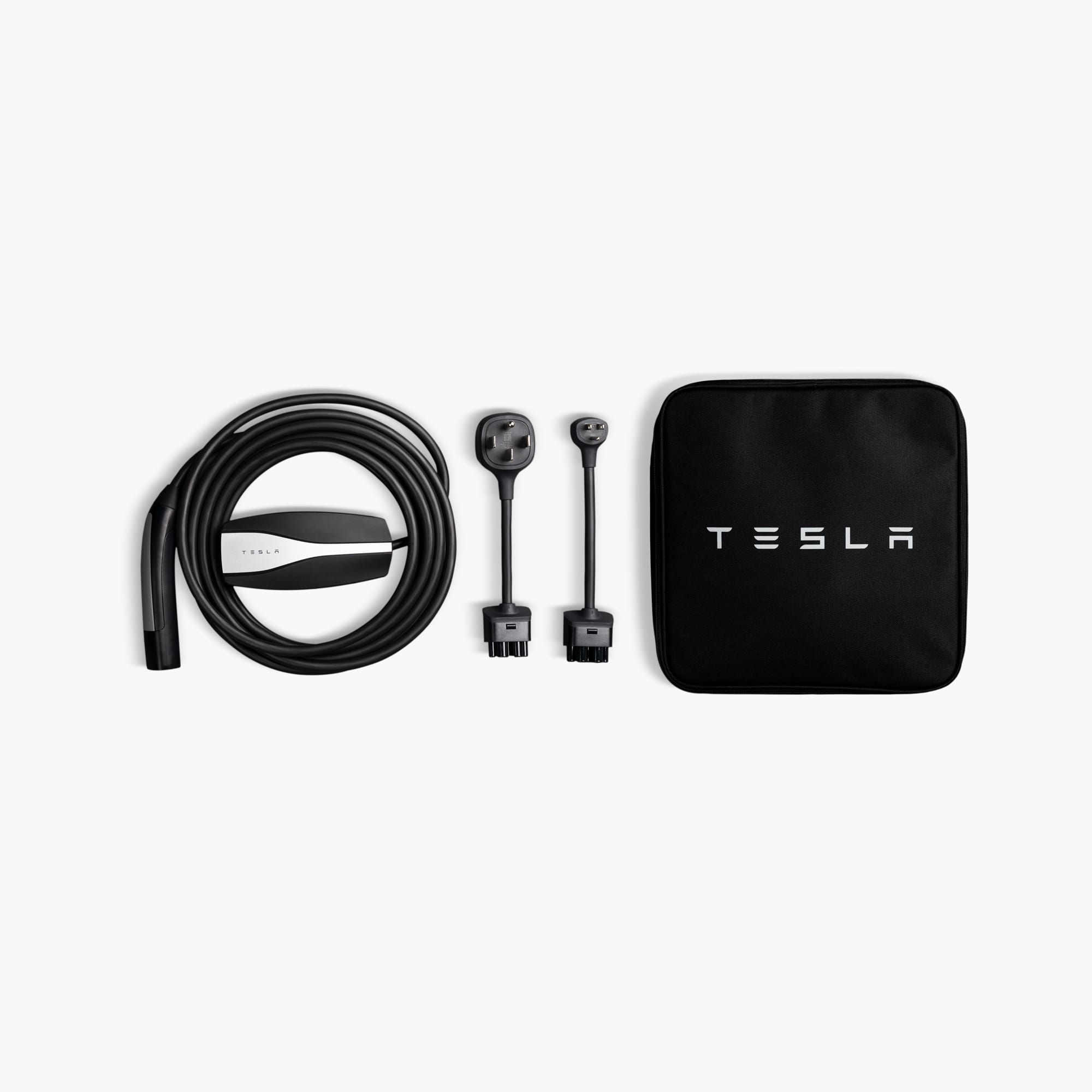Found it in the Owners Manual!
(UMC_a002)
Unable to charge - Mobile Connector GFCI trippedUnplug charge handle from charge port and retry
The vehicle cannot charge because the ground-fault circuit interrupter (GFCI) in the Mobile Connector has tripped.
Like the GFCI in a wall outlet, this feature is designed to stop the flow of electricity when there is a problem. It has interrupted charging to protect your vehicle and the charging equipment.
This could happen for many reasons. The problem could be in the charge cable, the charge handle, the charge port, or even an onboard vehicle component.
Inspect the charge port as well as the charge handle for pooled water or unusual levels of moisture.
- If you find excessive moisture, wait and let both the inside area of the charge port and the exposed portion of the charge handle dry sufficiently before trying again.
Inspect the charge equipment for damage.
- If the cable is in any way damaged or deteriorated, do not use it. Try different charging equipment instead.
- If the cable is in good condition, try charging again with the same Mobile Connector.
If the issue persists and prevents charging, try charging with different charging equipment.
As this alert is usually specific to external charging equipment and power sources, and it does not typically indicate an issue with your vehicle that can be resolved by scheduling service, it is recommended that you:
- Try charging with multiple, different types of charging equipment.
You can also try charging your vehicle using a Tesla Supercharger or Destination Charging location, all of which can be located through the map on your vehicle's touchscreen display. See
Maps and Navigation for more details. Additional third-party charging stations may also be available in your area to help you to pinpoint the issue.
For more information on troubleshooting Mobile Connector status lights and charging issues, refer to the
product's owner's manual.




